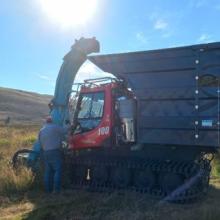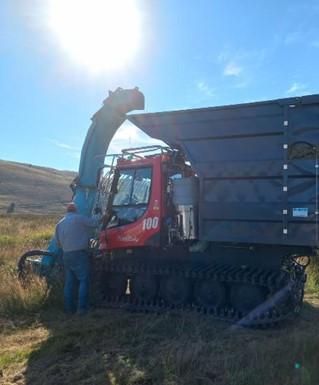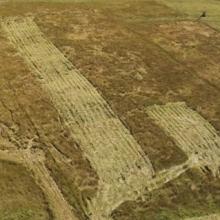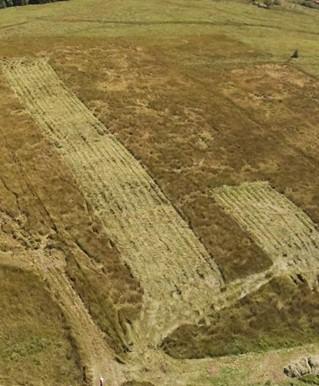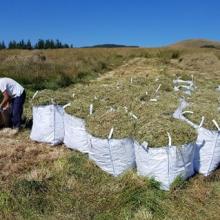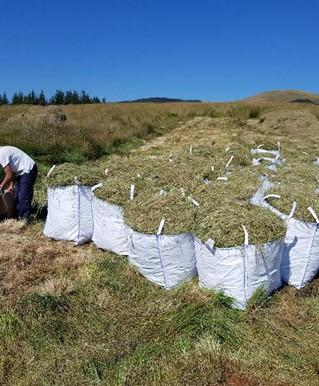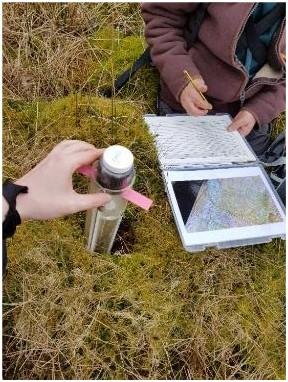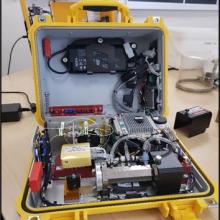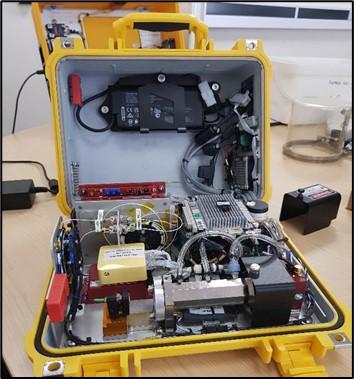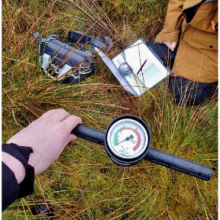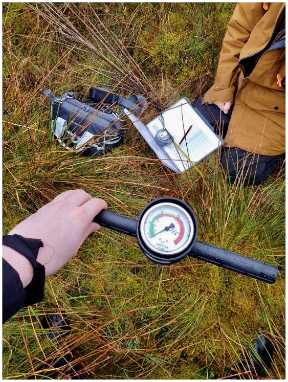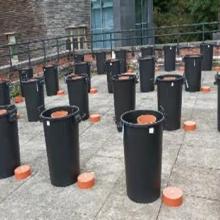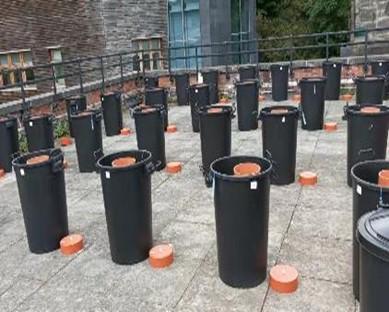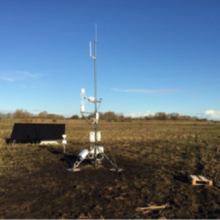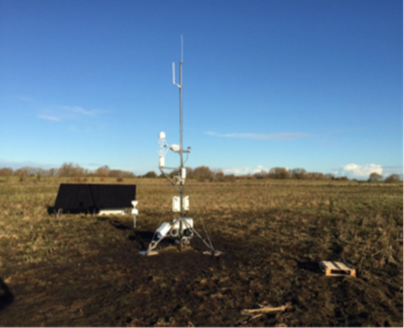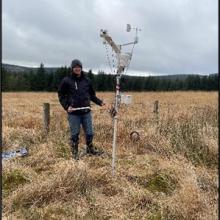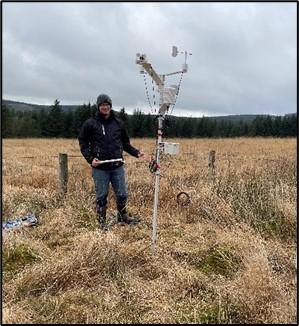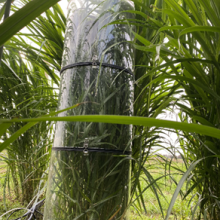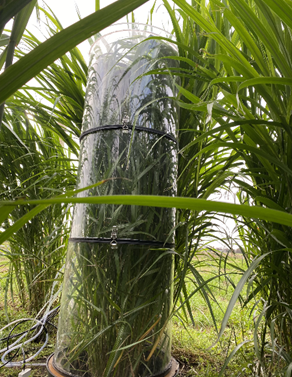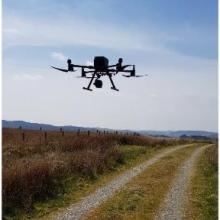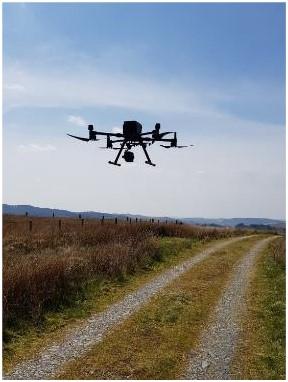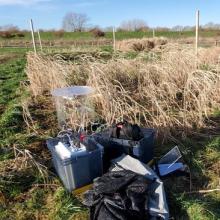This UKRI-funded project is demonstrating methods and technologies to turn degraded UK peatlands into effective and secure long-term greenhouse gas removal (GGR) systems. It has established three GGR demonstrator field sites with implemented interventions tailored to local conditions where we carefully monitor environmental impacts. The project will quantify the GGR benefits and research innovative land-management practices.

Peatland restoration (the "GGR-Peat" project)
About GGR-Peat
The GGR-Peat project works with natural processes to restore, and where possible enhance, the environmental conditions that lead to peat formation. Simultaneously it will develop innovative approaches to increase rates of CO2 uptake and store it securely for millennia.
Our GGR Demonstrator project has transformative potential for research on peatlands. We challenge the assumption that peatlands in the UK invariably function as net source of greenhouse gases under all but pristine conditions. Instead, we propose that the active, science-based management of even heavily degraded peatlands could enable them to be net GHG sinks.
Our objective therefore is to demonstrate how to transform degraded peatlands from the UK's largest land-derived GHG emissions source, into one of the most efficient GHG removal (GGR) systems. Our approach will combine and test 'nature-based' solutions such as high water level management, high-productivity wetland agriculture and accelerated Sphagnum re-establishment with 'geoengineering' solutions including biochar production and application, use of non-native biomass species and use of amendments for methane and nitrous oxide emission.

Why peatland restoration?
Peatlands store more carbon than any other terrestrial ecosystem, both in the UK and globally.
Because of human disturbance they are rapidly losing this carbon to the atmosphere, contributing significantly to global greenhouse gas (GHG) emissions and climate change.
Peatlands are carbon-rich wetlands which occupy 10% of UK land area. Peatland plants capture CO2 through photosynthesis. The acidic and waterlogged habitat of healthy, functioning peatlands mean that when plants die, they decompose very very slowly and so store the carbon in the ground. Peatlands store more carbon than any other terrestrial ecosystem, and in the UK they store 3 billion tonnes of carbon. However, as a result of human disturbance our peatlands are drying out, and then decomposition restarts and so they are rapidly losing this carbon to the atmosphere.
Our activities (each linked to a work package) are to
Demonstrate experimentally the capacity of land-management to convert degraded peatlands into effective and secure long-term greenhouse gas removal systems.
Quantify the direct and indirect benefits, costs and risks associated with peat GGR, including social and economic barriers, co-benefits and trade-offs.
Develop sustainable technical, social, political and financial pathways to large-scale peat GGR.

Experimental test field sites
Four experimental test locations have been established in representative lowland and upland peat settings: South Yorkshire, near Doncaster; land owned by the National Trust in the South Pennines; the Pwllpeiran Upland Research Centre in the Cambrian Mountains of Wales; and at an arable farm on lowland peat in Cambridgeshire.
We will provide useable outputs for:
- Peatland ecologists, biogeochemists and modellers who require underpinning data relating to soil processes and GHG regulation.
- Eco-hydrologists and restoration scientists seeking to understand peatland form and function in response to rewetting and re-vegetation strategies such as Sphagnum planting.
- Agronomic researchers including those specialising in paludiculture seeking to achieve environmental and economic benefits from wet cultivation practices.
- Biochar and bioenergy scientists exploring new opportunities to deploy GGR technologies in the landscape, and to identify potential long-term C storage mechanisms.
- Scientists working on ecosystem services and natural capital who will more broadly benefit from the range of data collected at each of the demonstrators.
- Social scientists and economists studying the underlying drivers of peatland degradation and seeking to identify societally acceptable and economically viable alternative forms of management, who will benefit from the extensive landowner and stakeholder survey data collected for the project.
- International peatland scientists, including those working on tropical peatlands, seeking new forms of land-use on peat soils that reduce their current contribution to global GHG emissions while supporting sustainable development.
Other beneficiaries
The project will provide training for several Post-Doc Research Associates.
These researchers will benefit from the skills they develop in their specific disciplines (field monitoring of GHG emissions, crop breeding, agricultural economics, social sciences) and the experience of working in a multi-disciplinary team.
The project will be highly relevant to parallel GGR research in the overall GGR programme including projects examining nature based solutions, agricultural GHG mitigation, biochar and bioenergy-BECCs.
The team
Project lead: Professor Christopher Evans, UK Centre for Ecology & Hydrology.
Contact: info@ggrpeat.org
Research team: UK Centre for Ecology & Hydrology (lead), Aberystwyth, Aston, Bangor, Durham, East London and Manchester universities, Scotland’s Rural College (SRUC) and other project partners from government, NGOs and business.
